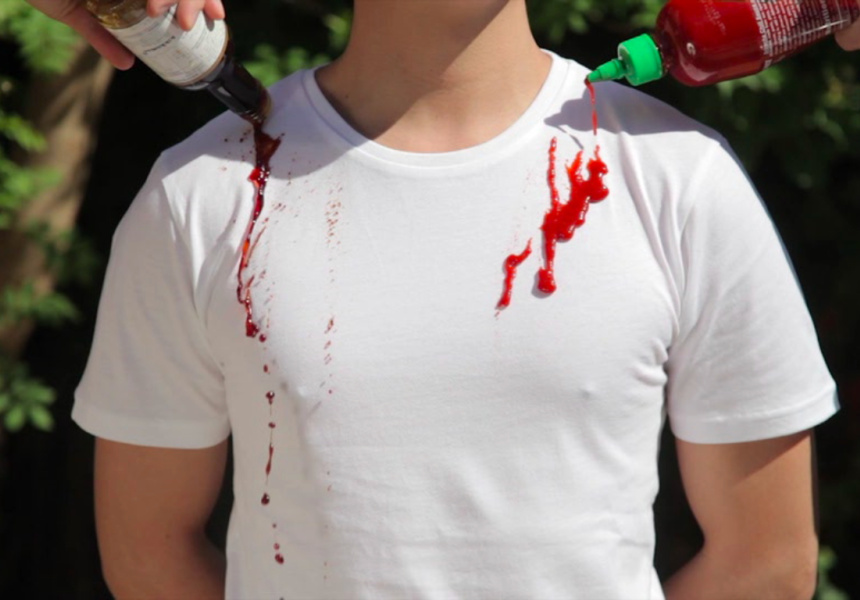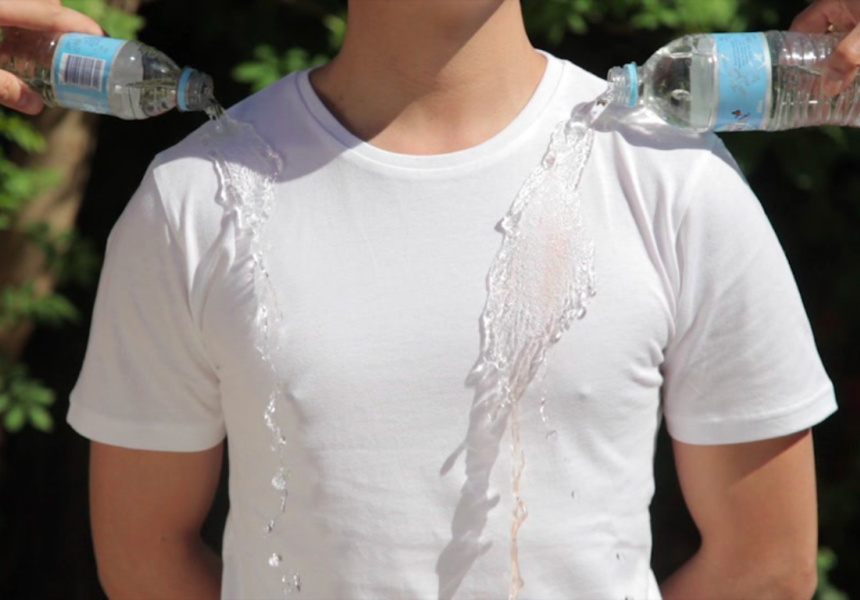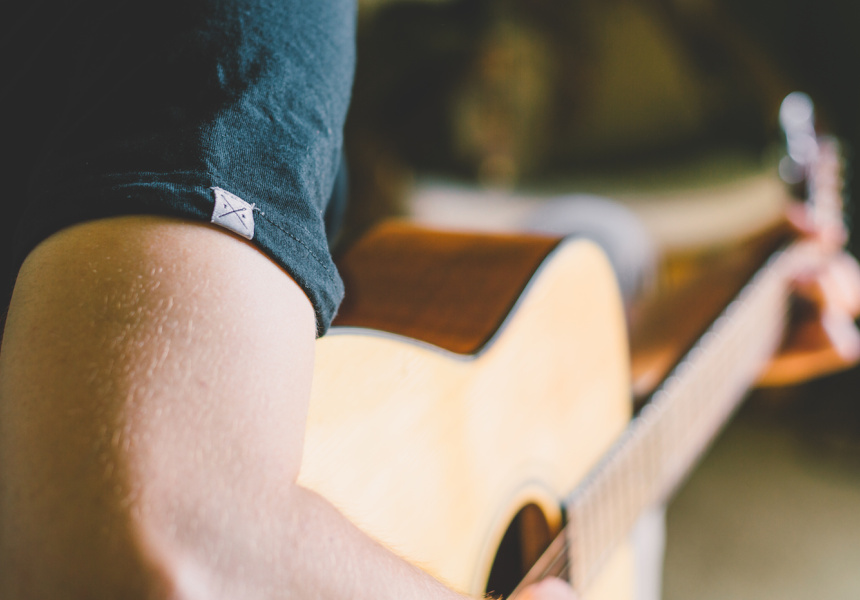David Mason and Lewis Pitchford are behind the Cavalier – a water-repellent T-shirt made by their company Threadsmiths. Pour mustard on it, and it slides off. Spill red wine on it, and it drips away. No stains, no smells.
The Melbourne-based duo was the first in the world to sell the wearable technology that feels just like regular cotton but beads liquid, rather than soaking it up.
Now they’ve partnered with Adrian Li, the executive chef at Tokyo Tina, Hanoi Hannah and Saigon Sally, to produce a range of water- and stain-resistant workwear for chefs. The new company, Fabricor, sold its first pieces two weeks ago after a successful Kickstarter campaign.
We think you might like Access. For $12 a month, join our membership program to stay in the know.
SIGN UPLike the Threadsmiths T-shirts, Fabricor’s jackets and aprons are tough to stain. Their stain resistance fades after three or so washes, but it can be refreshed by tumble-drying at a low heat. It’s a brilliant option for chefs. Perhaps the only downside is its wicking ability, which is poor compared to regular cotton clothing. If it gets hot, a Threadsmiths or Fabricor top might have you feeling a tad sweatier than usual.
We spoke to Threadsmiths’ co-founder Lewis Pitchford to find out more about the technology.
Broadsheet: This sort of hydrophobic technology has gathered a lot of hype over the past few years. How did two guys from Melbourne get it on the market before anyone else?
Lewis Pitchford: We’d been thinking about collaborating for a while. We’re both into fashion and retail, so initially we thought about doing our own label, doing clothing lines and focussing on the fashion aspect. But that’s been done to death. We wanted to find a niche in the market somehow, so we did a lot of brainstorming.
A family friend of David’s actually owns a factory in Guangzhou, China. The factory had been on the path of developing what we now know as the Threadsmiths technology, so we kind of piggybacked on that, helped, and got on board as soon as we could. It was a lot of luck, but we worked really hard with the factory to get it to where it is today.
BS: Are we going to see a whole lot of companies following in your footsteps, making clothes with this technology?
LP: I’ve haven’t seen anything like this on the market yet. There are obviously people doing waterproof applications, but to my knowledge, we’re the only ones doing this 100 per cent natural application, rather than something using nylon or plastic. We’ve actually had the patent for a little while now.
BS: How does it work?
LP: It’s a nanoparticle woven into the cotton itself. When the material comes together, it forms a layer on top of the cotton to create a slick, repelling surface. But looking at it, you wouldn’t even know. That’s exactly what we were going for. We didn’t want it to have a fake, plastic-y feel to it. That’s one thing we were really adamant about. We did a lot of back-and-forth with the factory to get it right.
BS: Will all clothes have this technology in 20 years?
LP: I’d love to see that. From a sustainability point of view, it’d be great. Essentially, a white T-shirt is almost disposable. Once you get a stain, it’s hard to get rid of it. In the future, we’d like to make it so people don’t have to buy 15 T-shirts – they could just have two or three of these white T-shirts they could wear 80 times each.



